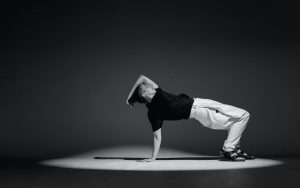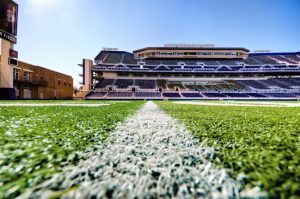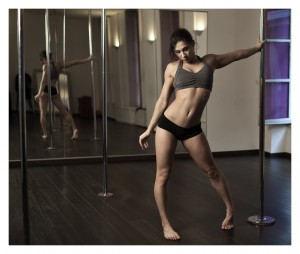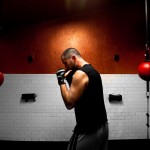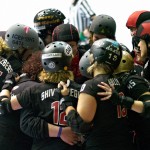Women’s sport, authenticity and the power of inclusion
By: Pep Phelan

Like many across the continent, over a weekend in early April, I sat down to watch the zenith of achievement in both the AFL and NRL sporting codes: the women’s grand finals.
The grand final represents the culmination of blood, sweat, and tears over a lifetime of playing sport, often against significant structural challenges and odds. These are the pinnacle matches in the burgeoning professional era for women in these sports, and they were exciting, entertaining, broadcast and celebrated.
Watching these matches, it became apparent why the way women’s sport is participated in and played resonates so deeply with me: it is so necessary and critically important.
Image: pixdeluxe
My epiphany came when without fear or hesitancy, and with all the joy and empowerment in the world, AFLW best-on-ground Anne Hatchard thanked her partner Georgie for her love and support.
The power of that simple, heartfelt public expression of gratitude towards her partner was compelling and deeply impactful. A sentiment such as this – normal and commonplace to so many couples all across the world – is still a brave act for those whose lives defy heteronormativity.
The unapologetic visibility of women (lesbian, bisexual, pansexual, queer – however individuals choose to identify), non-binary, and genderqueer individuals in women’s sport in Australia makes my heart soar, particularly in the football codes.
The power of such visibility cannot be underestimated, downplayed or denied. Nor can the ease with which many of these athletes can participate as fully embodied humans in the activities they love.
I have wondered for many years what exactly it is about this kind of visibility that really connects with the LGBTIQ+ community, and during those grand finals it finally made sense.
Their powerful presence, built from self-awareness, authenticity, dignity, joy and fortitude is deeply emancipating and truly healing. Particularly as it is expressed so genuinely, in direct defiance of the shame, denial of self, and invisibility that they are expected by dominant culture to personify.
It symbolises to all of us that, despite all attempts at LGBTIQ+ marginalisation and erasure, we are thriving. Front and centre.
None of us can function at our highest capacity, reaching out for our goals and dreams, if we are denied the opportunity of bringing our most authentic, whole selves to the world.
The sustainment of barriers to people presenting and participating as the truest expression of themselves has detrimental impacts on an individual’s psychology, physiology, spirituality, and social life. In turn it weakens our communities, and society more broadly.
Many of the barriers and obstacles that exist in sport are driven by patriarchal constructions of the world. With this come the classic weapons of such social architecture: heteronormativity and heterosexism, cis-normativity and cisgenderism, misogyny and sexism, white supremacy and racism, ableism, and xenophobia.
For far too long, sport has been dominated by men, for men. Whilst there are many men who advocate for a more progressive agenda in sport, almost all men aren’t conscious of – or, even worse, are wilfully ignorant of – how patriarchal structures benefit and sustain their lives and experiences, generating and framing their knowledge, perceptions and behaviours.
In the context of sport, this social privilege has most men blind to the ease at which participation, support, and success is accessible to them, and how substantial the barriers are for women, non-binary, and trans people wanting the same opportunities.
In the case of women’s sport, code executives and sports administrators seem to lack the insight as to how their own privileged experiences distort their perceptions and beliefs about women, non-binary, and trans people, and how this significantly impacts the decisions they make regarding the sports they administer. This includes the allocation of resourcing and who is included or excluded from participation, based upon their own obsolete and deeply harmful patriarchal indoctrination.
Over that weekend of the AFLW and NRLW grand finals, I saw athletes openly and joyfully celebrating their successes at the elite level of sport. Unhindered, many were able to bring a full representation of themselves: their relationships, families, friends and communities. Watching them reminded me of how integral a role sport can play in social transformation.
I cannot separate my queer joy for women’s sport – the incredible queer athletes who show up and excel as exactly who they are, and all the deep level of healing that brings me – from the equally heartfelt despair that I experience when my intersex and trans siblings are stigmatised, castigated, vilified, marginalised and excluded from participation.
While queer women and non-binary people are currently flourishing out on the footy field, the patriarchy is still hard at work. Its particularly potent flavour of bigotry diligently propagates myths and deceitful narratives as to why trans exclusion is to be prioritised and valorised.
Like it or not, the women’s football codes have changed the sporting and social landscape.
In doing so, they have brought a new way of experiencing, supporting, and participating in sport. It has opened up a whole new world to people who have until quite recently been locked out of participating. There is a palpable sense of community, mateship, solidarity, and safety that many of us have never experienced before; that deep level of connection you can only get when you show up authentically and know you will be peacefully embraced.
The women’s codes have brought with them a sense of humanity and inclusion that does not yet exist, or at least is not yet visible, across the men’s codes. But I look forward to the day I can experience the same exquisite queer joy I experienced while watching the women’s grand finals again, this time watching men in sport be exactly who they are.
Pep Phelan is a writer living as a perpetual guest on Naarm/Melbourne, whose work spans gender, sexuality, disability, social and emotional wellbeing, leadership and sport.



